How Sæmundur The Wise Tricked The Devil Three Times
Ellen Lloyd -AncientPages.com - Magic is a popular subject in Icelandic folklore. Many stories exist about people who performed extraordinary magical feats and achieved amazing things.
Many ancient books and manuscripts record Icelanders' magical beliefs and practices, which have been preserved for future generations.
One curious story, reflecting a mixture of Christian and Pagan elements, is about how Sæmundur Sigfússon (1056 – 1133) tricked the Devil not just once but three times. Each time, he used a different trick, confusing the Devil.
Aurora over Iceland. Credit: Theo Schacht - CC BY-SA 3.0 DE
Sæmundur Sigfússon, also known as Sæmundur the Learned or Sæmundur the Wise, was a priest who had attended the Black School (Svartiskóli). Whether he studied in France or somewhere in Franconia in northern Bavaria, Germany (formerly a separate duchy of the Holy Roman Empire) is still debated by scholars.
Black School And Dark Arts
Every student who attended the Black School was introduced to the secrets of dark arts. What exactly was taught in this mysterious school remains a subject of debate, but above the entrance to the school, it was written: "You may come in; your soul is lost."
In his book Icelandic Magic: Practical Secrets of the Northern Grimoires, Stephen E. Flowers, director of the Woodharrow Institute for Germanic and Runic Studies, writes that "there was a law in that school that anyone who came must study there for three years. All the ones who were left in any given year had to leave the place at the same time, and the Devil would always keep the one who was last to leave, and so they would always draw lots to see who would be the last one out. More than once the lot fell on Sæmundur, and so he stayed there longer than the law allowed."
Sæmundur Gets A Chance To Escape From The Black School
One day, Sæmundur's life changed, and he was given a chance to leave the Black School. When Bishop Jón, who was on his way to Rome, passed the Black School, he learned that Sæmundur was still trapped there. The Bishop offered Sæmundur an opportunity to escape from the school, but only under the condition that he would become a good Christian when he returned to Iceland. Eager to finally leave the place, Sæmundur accepted the terms.
Bishop Jón was clever and tried to escape unseen with Sæmundur, but the Devil was cunning and noticed the two men were up to something.
"Bishop Jón made Sæmundur walk in front of him, but he wore his cloak loosely over his shoulders, and just when Jón was about to get out, a hand came up through the floor and gripped the cloak and pulled it under, but Jón got out," Flowers relates in his book.
The Devil (fjandinn) made a pact with Sæmundur, who was told he could only leave if he remained hidden for three nights. If Sæmundur failed, he was destined to stay in the Black School with the Devil forever.
Sæmundur was intelligent, and with some help from Bishop, he figured out a way to fool the Devil.
Credit: Public Domain
"The first night Sæmundur hid under a riverbank, both in the water and in the soil at the same time, thus the Devil (Satan) thought that Sæmundur had drowned in the river; the second night he hid out at sea in a shipwreck that was drifting offshore, so the Devil believed that the river must have to spit him out into the sea; the third night he had himself buried in consecrated earth, so the Devil thought that Sæmundur must have been washed ashore dead and been buried in a churchyard, into which he dared not go to seek him. All this was done according to Bishop Jón's advice. "
According to Flowers, another version of the story also describes how Sæmundur fled the school by tricking the Devil with a false leg.
Sæmundur was clever, and he sewed a leg of mutton into his cloak. Then, he followed his fellow students' group, rushing out through the school doors. When Sæmundur was near the exit, the Devil reached up to grab his cloak but only grabbed the leg that was sewn into the clothing. Sæmundur then dropped the cloak and ran, saying: "He grabbed, but I slipped away!"
Snorri Sturluson Was A Student At Oddi
Sæmundur returned to Iceland, and he founded a long-lived school at Oddi, a cultural and learning center during the Middle Ages.
In Iceland, Sæmundur the Wise was regarded as a larger-than-life character. Many prominent persons attended his school at Oddi. One of them was famous historian Snorri Sturluson (1178-1241), and it has been suggested that the name of the Edda, which we always refer to when we discuss Norse mythology, is derived from Oddi.
Written by - Ellen Lloyd – AncientPages.com
Updated on April 15, 2024
Copyright © AncientPages.com All rights reserved. This material may not be published, broadcast, rewritten or redistributed in whole or part without the express written permission of AncientPages.com
More From Ancient Pages
-
 A Remarkable Curse Tablet Dated To the 1st Century AD – Unearthed In Tongeren
Archaeology | Jul 10, 2020
A Remarkable Curse Tablet Dated To the 1st Century AD – Unearthed In Tongeren
Archaeology | Jul 10, 2020 -
 Mystery Of The Bloody Island Poveglia – A Place Of Hell In Ancient And Modern Times
Featured Stories | Jan 21, 2016
Mystery Of The Bloody Island Poveglia – A Place Of Hell In Ancient And Modern Times
Featured Stories | Jan 21, 2016 -
 Beer Was Used As Medicine And Payment In Ancient Egypt
Ancient History Facts | Feb 11, 2018
Beer Was Used As Medicine And Payment In Ancient Egypt
Ancient History Facts | Feb 11, 2018 -
 Saturnalia Feasts In Roman Empire
Ancient History Facts | Jun 30, 2018
Saturnalia Feasts In Roman Empire
Ancient History Facts | Jun 30, 2018 -
 Race Against Time: Crucial Expedition To Delve Into Bouldnor Cliff, Europe’s Mesolithic Underwater Stone Age Site
Underwater Discoveries | Apr 28, 2024
Race Against Time: Crucial Expedition To Delve Into Bouldnor Cliff, Europe’s Mesolithic Underwater Stone Age Site
Underwater Discoveries | Apr 28, 2024 -
 Archaeologists Begin Excavations Of A Sunken Zhiyuan Warship That Sank In 1894
Archaeology | Oct 7, 2015
Archaeologists Begin Excavations Of A Sunken Zhiyuan Warship That Sank In 1894
Archaeology | Oct 7, 2015 -
 Magnetic Fields Used To Explore Doggerland And Other Prehistoric Submerged Sites
Archaeology | Mar 10, 2023
Magnetic Fields Used To Explore Doggerland And Other Prehistoric Submerged Sites
Archaeology | Mar 10, 2023 -
 Mysterious Disappearance Of Louis Le Prince – Murder And Cover-Up?
Featured Stories | Jun 27, 2020
Mysterious Disappearance Of Louis Le Prince – Murder And Cover-Up?
Featured Stories | Jun 27, 2020 -
 What Was Life Like For Children In Ancient Athens?
Ancient History Facts | Jul 4, 2018
What Was Life Like For Children In Ancient Athens?
Ancient History Facts | Jul 4, 2018 -
 What Was Asphalt Doing On A 9,000-Year-Old Skull Discovered In The Judean Desert
Archaeology | Feb 1, 2022
What Was Asphalt Doing On A 9,000-Year-Old Skull Discovered In The Judean Desert
Archaeology | Feb 1, 2022 -
 The Great Pyramid And Ancient Egyptian Knowledge Shed Light On Biblical Mysteries – Surprising Information – Part 2
Biblical Mysteries | Nov 27, 2019
The Great Pyramid And Ancient Egyptian Knowledge Shed Light On Biblical Mysteries – Surprising Information – Part 2
Biblical Mysteries | Nov 27, 2019 -
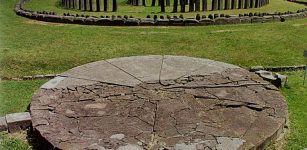 Sarmizegetusa And Its Andesite Sun Artifact Similar To The Mayan Calendar
Artifacts | Apr 13, 2021
Sarmizegetusa And Its Andesite Sun Artifact Similar To The Mayan Calendar
Artifacts | Apr 13, 2021 -
 Kizilkoyun Necropolis: Excavations Of 2,000-Year-Old Rock Tombs Will Solve Mysterious Past Of Göbeklitepe
Archaeology | Sep 7, 2020
Kizilkoyun Necropolis: Excavations Of 2,000-Year-Old Rock Tombs Will Solve Mysterious Past Of Göbeklitepe
Archaeology | Sep 7, 2020 -
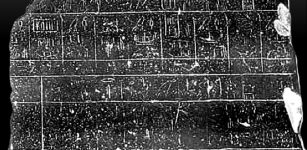 Palermo Stone: One Of The Earliest History Records Of Ancient Egypt
Artifacts | Apr 15, 2016
Palermo Stone: One Of The Earliest History Records Of Ancient Egypt
Artifacts | Apr 15, 2016 -
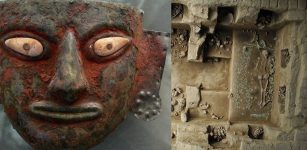 Ancient Tomb Of Peru’s Moche Priestesses Unearthed
Archaeology | Jul 23, 2016
Ancient Tomb Of Peru’s Moche Priestesses Unearthed
Archaeology | Jul 23, 2016 -
 King Tabnit’s Sarcophagus And Its Surprising Forever-Lost Secret
Featured Stories | Jul 30, 2023
King Tabnit’s Sarcophagus And Its Surprising Forever-Lost Secret
Featured Stories | Jul 30, 2023 -
 Stone Artifacts Reveal Humans Lived In Philippines 700,000 Years Ago – Much Earlier Than Previously Thought
Archaeology | May 11, 2018
Stone Artifacts Reveal Humans Lived In Philippines 700,000 Years Ago – Much Earlier Than Previously Thought
Archaeology | May 11, 2018 -
 Rock-Carved Turkey’s Çakırkaya Monastery Dated To 13th Century Will Be Restored
Archaeology | Mar 18, 2020
Rock-Carved Turkey’s Çakırkaya Monastery Dated To 13th Century Will Be Restored
Archaeology | Mar 18, 2020 -
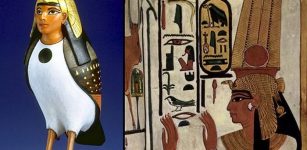 Why Were Ba And Ka Powerful Elements Of Soul In Ancient Egyptian Beliefs?
Egyptian Mythology | Apr 21, 2020
Why Were Ba And Ka Powerful Elements Of Soul In Ancient Egyptian Beliefs?
Egyptian Mythology | Apr 21, 2020 -
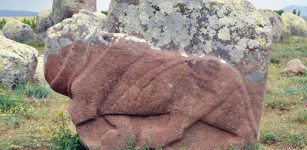 Mystery Of Gigantic Lion Sculptures Dated To The Hittite Era
Archaeology | Apr 14, 2016
Mystery Of Gigantic Lion Sculptures Dated To The Hittite Era
Archaeology | Apr 14, 2016



